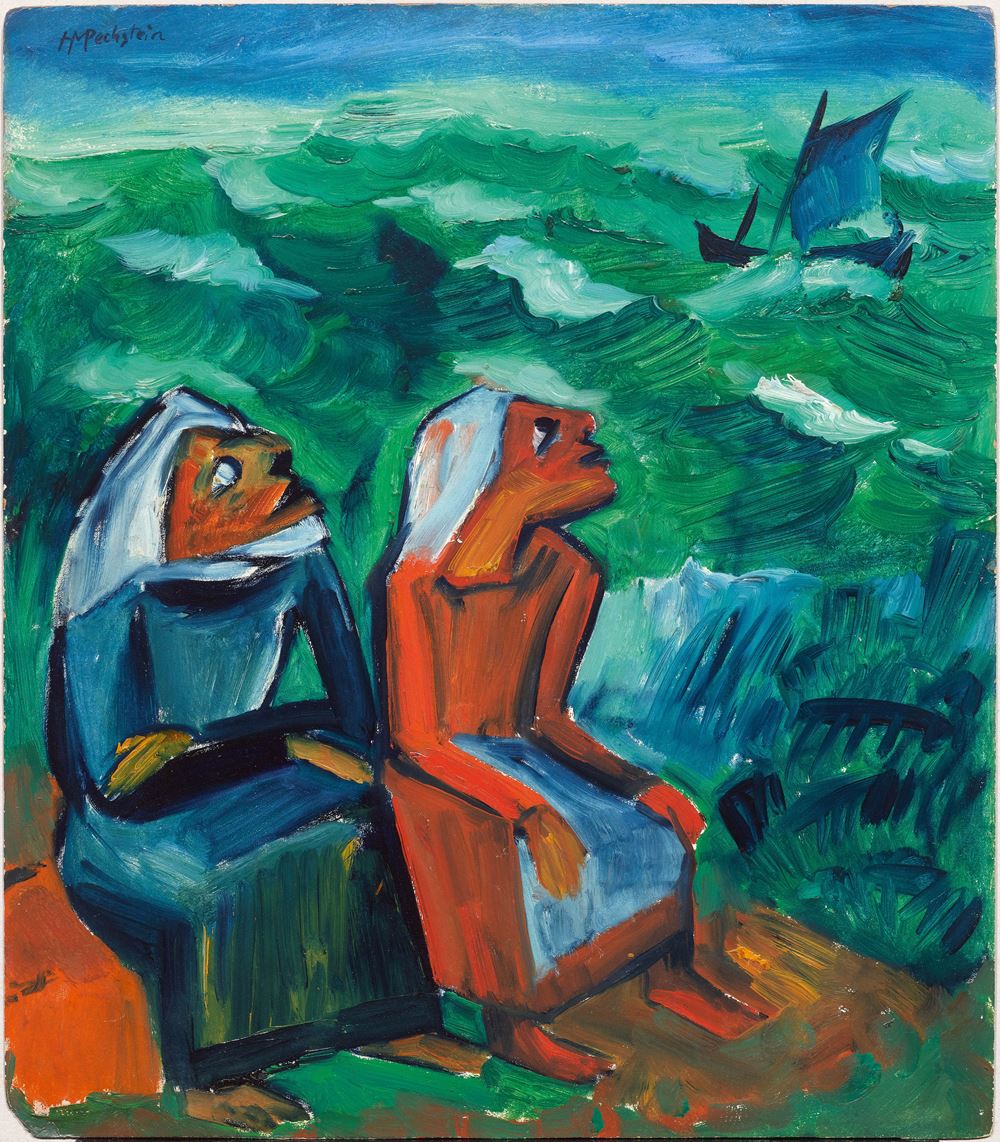
Lot 3523* - A193 Art Impressionniste & Moderne - vendredi, 03. juillet 2020, 16h00
HERMANN MAX PECHSTEIN
- Carl Steinbart, Berlin, purchased circa 1920 directly from the artist.
- Irmgard Bender (born Steinbart), Berlin/Bad Godesberg, received 1923 by descent from the above.
- German private collection, purchased before 1976 from the above.
Literature:
Aya Soika: Max Pechstein. Das Werkverzeichnis der Ölgemälde, Munich 2011, vol. II, p. 198, no. 1920/12 (with col.ill.).
In 1909 Hermann Max Pechstein travelled for the first time to the East Prussian fishing village of Nidden on the Curonian Spit. He joined the Nidden artist colony, the centre of which was the Blode guesthouse, where painting and discussions on art took place. Pechstein liked the quiet fishing village and felt connected to the local fishermen and workers. The remote village, far from any tourism, became the artist's favourite summer holiday location, as a rural idyll where he could escape the wild metropolis of Berlin and immerse himself in nature. There, he also found the symbiosis between humanity and nature. Pechstein harboured a fascination for simple and honest workers who earned their bread under hard and difficult conditions. This included the village’s fishing community, who left a lasting impression on him and of whom he sought to give a worthy representation throughout his life.
Pechstein spent his fifth summer in Nidden in 1920. He left Berlin at the end of April and returned to painting after a long break from his work. "Now I have decided to take up the fight with the forest and the sea again in Nidden, then to look with more relief towards the South and dedicate my next years to it" (from a letter of 7th March 1920). During this time he produced the “Fischerleben” series, comprising around 16 paintings showing the daily life and activities of the fishermen and women in the village. It can be assumed that our present work “Fischerfrauen” (Fisherwomen) can also be classified in that cycle.
Although Pechstein desired to devote himself to the South after this series, the inspiration from past visits to the South Seas was already firmly anchored in his style, which is also distinctive in “Fischerfrauen”. Pechstein wrote to Edouard Plietzsch on 21st August 1920: “Promise through the work on the fisher pictures, which represent an intermediate stage to the ‘Vater Unser’, to learn all sorts of useful things and to benefit for the final work. Between this torturing and biting myself, (I) with pleasure painted 3 pictures, which represent a kind of nostalgic memory of thanks to the sunken splendour of the South Pacific.”
The two fisherwomen sitting in the foreground of the painting look out over the rough sea at the fishing boat and their husbands, who fight their way through the raging waves. Through Pechstein’s characteristic Expressionist style with its angular, rough brushstrokes combined with the quiet drama of an infinite sea, the artist is able impart the viewer with a brief yet honest insight into the lives of two fisherwomen.
CHF 220 000 / 280 000 | (€ 226 800 / 288 660)
Vendu pour CHF 341 900 (frais inclus)
Aucune responsabilité n'est prise quant à l´exactitude de ces informations.


